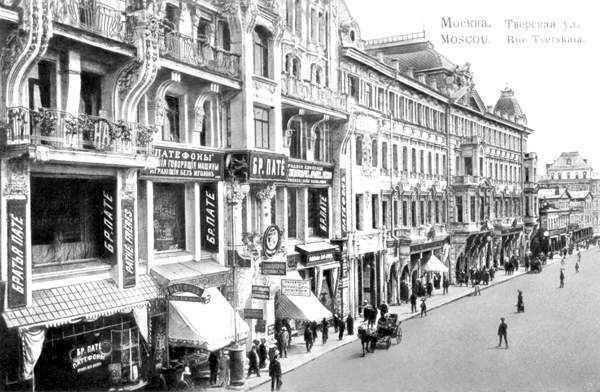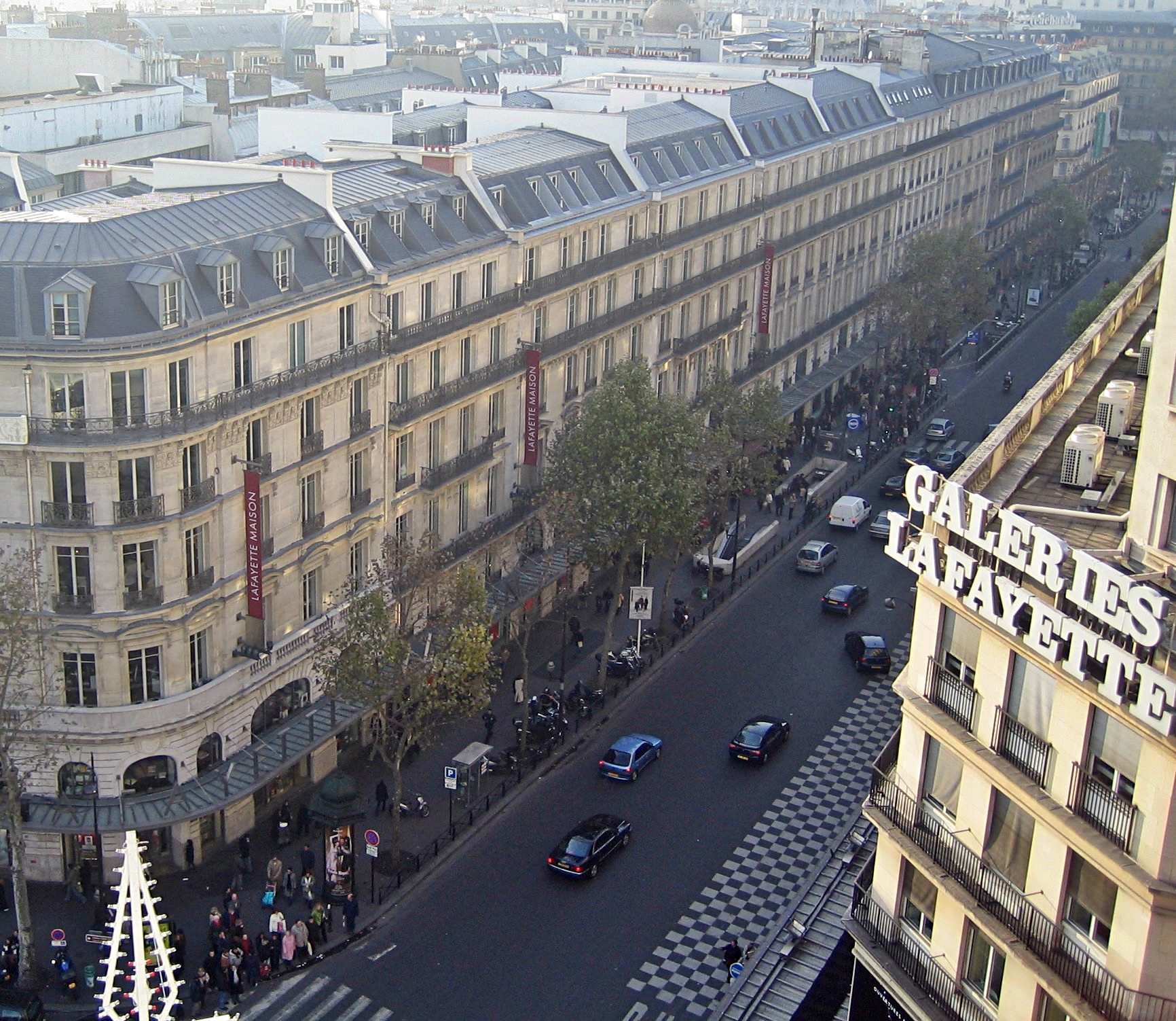|
Strastnoy Boulevard
Strastnoy Boulevard, (russian: Страстной Бульвар) is a major boulevard in Moscow. It begins in the Tverskoy District by Pushkin Square, Tverskaya Street and Tverskoy Boulevard. The boulevard ends at Petrovka Street, although east of Petrovka, it becomes Petrovsky Boulevard, where it heads to Clean Ponds. The Strastnoy Boulevard is a part of the Boulevard Ring The Boulevard Ring (russian: Бульва́рное кольцо́; transliteration: ''Bulvarnoye Koltso'') is Moscow's second innermost ring road (the first is formed by the Central Squares of Moscow running along the former walls of Kitai-gorod .... Gallery File:Страстной бульвар (Strastnoy Boulevard), Москва 02.jpg File:Страстной бульвар 01.JPG File:Страстной бульвар (Strastnoy Boulevard), Москва 04.jpg Boulevards in Moscow Cultural heritage monuments of regional significance in Moscow {{Moscow-geo-stub ... [...More Info...] [...Related Items...] OR: [Wikipedia] [Google] [Baidu] |
Boulevard
A boulevard is a type of broad avenue planted with rows of trees, or in parts of North America, any urban highway. Boulevards were originally circumferential roads following the line of former city walls. In American usage, boulevards may be wide, multi-lane arterial thoroughfares, often divided with a central median, and perhaps with side-streets along each side designed as slow travel and parking lanes and for bicycle and pedestrian usage, often with an above-average quality of landscaping and scenery. Etymology The word ''boulevard'' is borrowed from French. In French, it originally meant the flat surface of a rampart, and later a promenade taking the place of a demolished fortification. It is a borrowing from the Dutch word ' 'bulwark'. Usage world-wide Asia Cambodia Phnom Penh has numerous boulevards scattered throughout the city. Norodom Boulevard, Monivong Boulevard, Sihanouk Boulevard, and Kampuchea Krom Boulevard are the most famous. India * Bengaluru's Maha ... [...More Info...] [...Related Items...] OR: [Wikipedia] [Google] [Baidu] |
Moscow
Moscow ( , US chiefly ; rus, links=no, Москва, r=Moskva, p=mɐskˈva, a=Москва.ogg) is the capital and largest city of Russia. The city stands on the Moskva River in Central Russia, with a population estimated at 13.0 million residents within the city limits, over 17 million residents in the urban area, and over 21.5 million residents in the metropolitan area. The city covers an area of , while the urban area covers , and the metropolitan area covers over . Moscow is among the world's largest cities; being the most populous city entirely in Europe, the largest urban and metropolitan area in Europe, and the largest city by land area on the European continent. First documented in 1147, Moscow grew to become a prosperous and powerful city that served as the capital of the Grand Duchy that bears its name. When the Grand Duchy of Moscow evolved into the Tsardom of Russia, Moscow remained the political and economic center for most of the Tsardom's history. When th ... [...More Info...] [...Related Items...] OR: [Wikipedia] [Google] [Baidu] |
Tverskoy District
Tverskoy District ( rus, Тверско́й райо́н, p=tvʲɪrˈskoj, a=Ru-Тверской.ogg) is a district of Central Administrative Okrug of the federal city of Moscow, Russia. Population: The district extends from Kitai-gorod northwest to Belorussky and Savyolovsky Rail Terminals . Its southern boundary runs one or two city blocks south from Tverskaya Street; eastern boundary follows the track of the Neglinnaya River now flowing in a tunnel under Samotechnaya Street, Tsvetnoy Boulevard, and Neglinnaya Street. Tverskoy District houses State Duma, Federation Council of Russia, Federation Council, the Mayor of Moscow, Moscow City Council, and Moscow Police Headquarters. It contains Theatre Square (Moscow), Theatre Square, the business district of Tverskaya Street with Pushkin Square, Petrovka Street, Dmitrovka Street, and the western part of Kuznetsky Most. It has the highest concentration of theatres, including Bolshoi Theatre and the historical Pillar Hall of the Ho ... [...More Info...] [...Related Items...] OR: [Wikipedia] [Google] [Baidu] |
Pushkin Square
Pushkinskaya Square or Pushkin Square () is a pedestrian open space in the Tverskoy District in central Moscow. Historically, it was known as ''Strastnaya Square'' before being renamed for Alexander Pushkin in 1937. It is located at the junction of the Boulevard Ring (Tverskoy Boulevard to the southwest and Strastnoy Boulevard to the northeast) and Tverskaya Street, northwest of the Kremlin. It is not only one of the busiest city squares in Moscow, but also one of the busiest in the world. The former Strastnaya Square name originates from the Passion Monastery (russian: Страстной монастырь, Strastnoy Monastery), which was demolished in the 1930s. At the center of the square is a statue of Pushkin, funded by public subscription and unveiled by Ivan Turgenev and Fyodor Dostoyevsky in 1880. In 1950, Joseph Stalin Joseph Vissarionovich Stalin (born Ioseb Besarionis dze Jughashvili; – 5 March 1953) was a Georgian revolutionary and Soviet political ... [...More Info...] [...Related Items...] OR: [Wikipedia] [Google] [Baidu] |
Tverskaya Street
Tverskaya Street ( rus, Тверская улица, p=tvʲɪrˈskajə ˈulʲɪt͡sə), known between 1935 and 1990 as Gorky Street (russian: улица Горького), is the main radial street in Moscow. The street runs Northwest from the central Manege Square in the direction of Saint Petersburg and terminates at the Garden Ring, giving the name to Tverskoy District. The route continues further as First Tverskaya-Yamskaya Street, Leningradsky Avenue and Leningradskoye Highway. History and architecture Middle Ages to 18th century Tourists are told that Tverskaya Street existed as early as the 12th century. Its importance for the medieval city was immense, as it connected Moscow with its superior, and later chief rival, Tver. At that time, the thoroughfare crossed the Neglinnaya River. The first stone bridge across the Neglinnaya was set up in 1595. In the 17th and 18th centuries, Tverskaya Street was renowned as the centre of Moscow's social life. The nobility co ... [...More Info...] [...Related Items...] OR: [Wikipedia] [Google] [Baidu] |
Tverskoy Boulevard
Tverskoy Boulevard (russian: Тверской бульвар) is one of the main thoroughfares in central Moscow. It is a part of the Boulevard Ring and begins at the end of the Nikitsky Boulevard, at the crossing with Bolshaya Nikitskaya Street. The boulevard ends at the Pushkin Square and Tverskaya Street, one of the busiest places in Moscow. East of Tverskaya Street becomes Strastnoy Boulevard. First Tverskoy Boulevard was the first boulevard in the historical neighbourhood of Bely Gorod, "White Town" in Russian. The name comes from the fact that Bely Gorod was surrounded by white stone fortification wall which was built at the end of the 15th century and demolished at the end of the 17th century. It was replaced by several boulevards, together forming the Boulevard Ring. 1796 This oldest of Moscow's boulevards was laid out in 1796 under the direction of the architect Karin. Silver birches were the first trees to be planted here, but they did not take root, and so for almo ... [...More Info...] [...Related Items...] OR: [Wikipedia] [Google] [Baidu] |
Petrovka Street
Petrovka Street is a street in Moscow, Russia, that runs north from Kuznetsky Most and Theatre Square (Moscow), Theatral Square up past Strastnoy Boulevard and Petrovsky Boulevard. The street takes its name from the Vysokopetrovsky Monastery, St. Peter's Monastery, situated at the top of the hill, at the intersection of the street and the Boulevard Ring. The street is a home to upscale shops, offices, and night clubs, such as the historic Petrovka Passazh and Muir & Mirrielees, TsUM. Perhaps the most famous building is the Moscow Criminal Police (Petrovka, 38). The Petrovka Theatre, built in 1780 at the intersection of Petrovka and Okhotny Ryad, has been known as the Bolshoi Theatre since 1824. The street ends just before the Garden Ring, where the Hermitage Garden is located. The nearest Moscow metro, metro station is Teatralnaya (Moscow Metro), Teatralnaya, located on the Zamoskvoretskaya Line. See also *The Girl from Petrovka *Muir & Mirrielees Streets in Moscow ... [...More Info...] [...Related Items...] OR: [Wikipedia] [Google] [Baidu] |
Petrovsky Boulevard
Petrovsky Boulevard, (russian: Петровский Бульвар), is a major boulevard in Moscow. It begins at the Petrovsky Gates Square (Petrovka Street) and ends at Trubnaya Square, completing the link of Boulevard Ring between Strastnoy Boulevard and Rozhdestvensky Boulevard Rozhdestvensky Boulevard (Russian: Рождественский Бульвар, ''Roschdestvensky Boulevard'') is a major boulevard in Meshchansky District of Moscow, Russia. It begins at Trubnaya Square (west) and ends at Sretenka Gates in the .... The boulevard (as well as Petrovka Street and Petrovsky Gates) is named after Vysoko-Petrovsky Monastery. Apart from the monastery, there is still a fairly high (but shrinking) share of genuine 19th century buildings. Gallery File:13-15 Petrovsky Boulevard, Moscow, Russia.jpg File:Петровский бульвар, Москва 01.jpg File:Moscow, Petrovsky Blvd 6.jpg, Former high school File:Moscow, Petrovsky Boulevard, Petrovka 30.jpg, Former hote ... [...More Info...] [...Related Items...] OR: [Wikipedia] [Google] [Baidu] |
Clean Ponds
The Clean Ponds (russian: Чистые пруды, ''Chistye Prudy''), is a large pond in Moscow, Russia, located in the Basmanny District, on the Boulevard Ring. The pond gives its name to Chistoprudny Boulevard, which runs from Turgenevskaya Square and Sretensky Boulevard towards Pokrovka Street, where it adjoins Pokrovsky Boulevard, and to Chistyye Prudy (Moscow Metro), Chistyye Prudy station on the Moscow Metro. According to retired KGB colonel Victor Cherkashin, author of ''Spy Handler: Memoir of a KGB Officer: The True Story of the Man Who Recruited Robert Hanssen and Aldrich Ames'', the adjoining 'Chistyi Prudy (Clean Ponds)' is also part of "an old, prestigious neighborhood." On page 177 of his book, Victor Cherkashin spells the area as 'Chistyi' as opposed to 'Chistye.' The ponds were formed by a dam on the Rachka River which used to flow underneath the walls of the Bely Gorod, White City in the 17th century. Nowadays the river is underground, as are all the ponds but ... [...More Info...] [...Related Items...] OR: [Wikipedia] [Google] [Baidu] |
Boulevard Ring
The Boulevard Ring (russian: Бульва́рное кольцо́; transliteration: ''Bulvarnoye Koltso'') is Moscow's second innermost ring road (the first is formed by the Central Squares of Moscow running along the former walls of Kitai-gorod). Boulevards form a semicircular chain along the western, northern and eastern sides of the historical White City of Moscow; in the south the incomplete ring is terminated by the embankments of Moskva River. The first of the boulevards, Tverskoy Boulevard, emerged in 1796, but the ring was completely developed in 1820s, after the disastrous 1812 fire. The Ring replaced the medieval walls of the White City in the 1820s. The wall itself was razed in 1760, and despite the royal decrees to keep the site clear, the area was soon built over with private and state property. The Fire of Moscow destroyed many of those buildings, allowing the city planners to replace them with wide green boulevards. In the 20th century, the width of the Boulev ... [...More Info...] [...Related Items...] OR: [Wikipedia] [Google] [Baidu] |
Boulevards In Moscow
A boulevard is a type of broad avenue planted with rows of trees, or in parts of North America, any urban highway. Boulevards were originally circumferential roads following the line of former city walls. In American usage, boulevards may be wide, multi-lane arterial thoroughfares, often divided with a central median, and perhaps with side-streets along each side designed as slow travel and parking lanes and for bicycle and pedestrian usage, often with an above-average quality of landscaping and scenery. Etymology The word ''boulevard'' is borrowed from French. In French, it originally meant the flat surface of a rampart, and later a promenade taking the place of a demolished fortification. It is a borrowing from the Dutch word ' 'bulwark'. Usage world-wide Asia Cambodia Phnom Penh has numerous boulevards scattered throughout the city. Norodom Boulevard, Monivong Boulevard, Sihanouk Boulevard, and Kampuchea Krom Boulevard are the most famous. India *Bengaluru's Mahatm ... [...More Info...] [...Related Items...] OR: [Wikipedia] [Google] [Baidu] |

.png)


